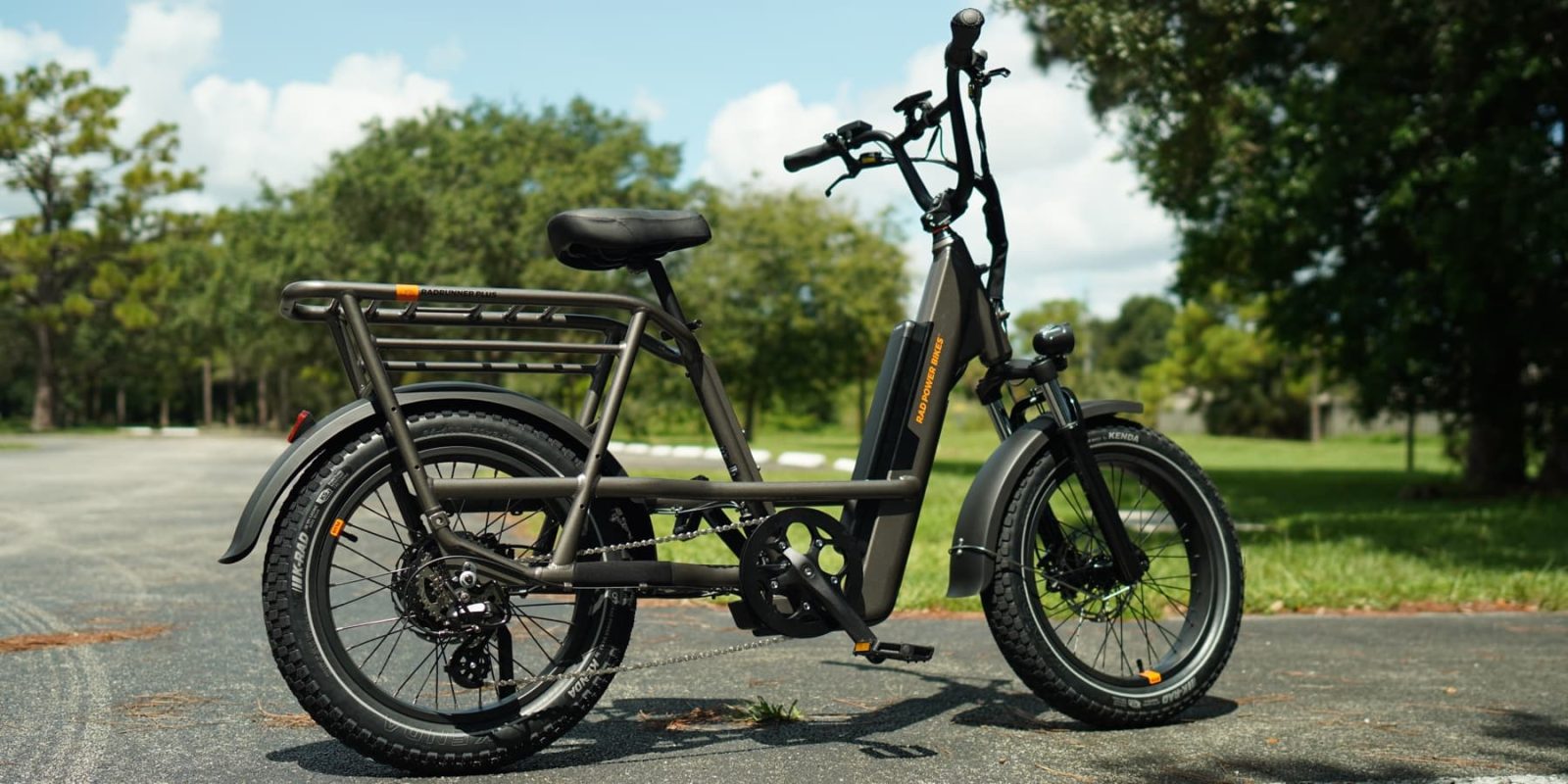
The RadRunner 3 Plus is an electric utility/cargo bike that deserves a serious second look because of its unique place in the market, straddling the line between value-oriented and premium-focused. It comes from Rad Power Bikes, one of the leading budget-minded e-bike brands in the US, yet is part of the company’s push toward the more premium segment of the market.
When Rad Power Bikes first unveiled the “Plus” line, it consisted only of the original RadRunner Plus. That was followed by launches for Plus versions of the RadRover and RadCity, adding higher-end parts like hydraulic disc brakes, higher torque motors for better hill climbing, and more sophisticated displays on the handlebars, among other upgrades.
Now, the RadRunner 3 Plus brings a whole new push toward premium from the company, showing that Rad doesn’t just want to be seen as a low-cost e-bike maker. Instead, it wants to compete with the higher-priced players in the market.
But can the RadRunner 3 Plus hang with the big boys and command a higher price? That’s exactly what I set out to discover. Check it out in my video review below, or keep reading for more details afterward.
RadRunner 3 Plus video review
RadRunner 3 Plus tech specs
- Motor: 750W rear-geared hub motor
- Top speed: 32 km/h (20 mph)
- Range: 45-72 km (25-45 mi) depending on user input
- Battery: 48V 14Ah (672 Wh)
- Charge time: 6 hours
- Weight: 34.2 kg (75.5 lb)
- Max load: 159 kg (350 lb)
- Brakes: Tektro hydraulic disc brakes on 180 mm rotors
- Extras: Side kickstand, dual LED displays, integrated head/tail/brake LED lights, bell, half-twist throttle, mounting for the huge collection of front and rear racks/accessories
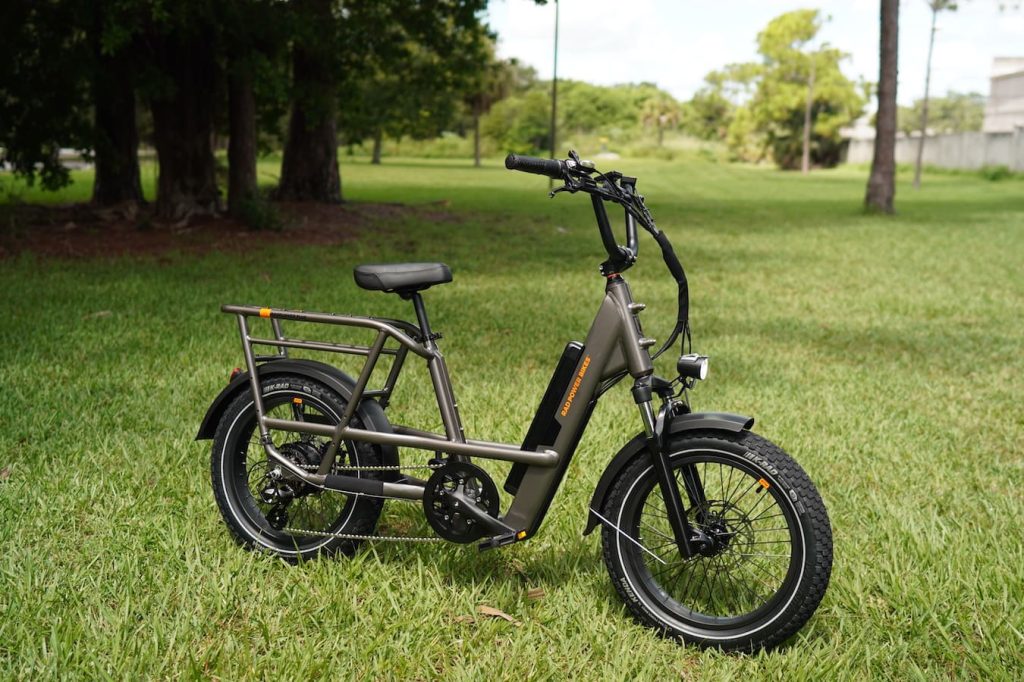
What more does it give us?
The RadRunner 3 Plus was unveiled with several new features compared to the previous version, adding parts like dual LED displays, hydraulic disc brakes, a slicker-looking semi-integrated battery, improved suspension, more comfortable seat design, and more.
But it also came with a surprisingly high price. It was quickly dropped to its current price of US $2,299 from a debut at US $2,499, but that still makes it the priciest RadRunner ever.
However, coming from someone who has ridden every version of the RadRunner, I can tell you it’s the best one yet.
The bike rides beautifully thanks to its design and geometry, giving me a comfortably relaxed ride stance that lets me rest my feet on the ground at stops while still having good pedaling form. The newly updated seat is also a major improvement, though the old RadRunner seat from the early days never bothered me as much as I heard from others.
The power is there, though I always feel like I want more when I hit that 20 mph (32 km/h) wall. I know Rad Power Bikes is content with Class 2 e-bikes, but I often find myself pining for a little Class 3 extra speed on long straightaways. That goes double when I’m on the side of a higher-speed road, keeping up with faster car traffic.
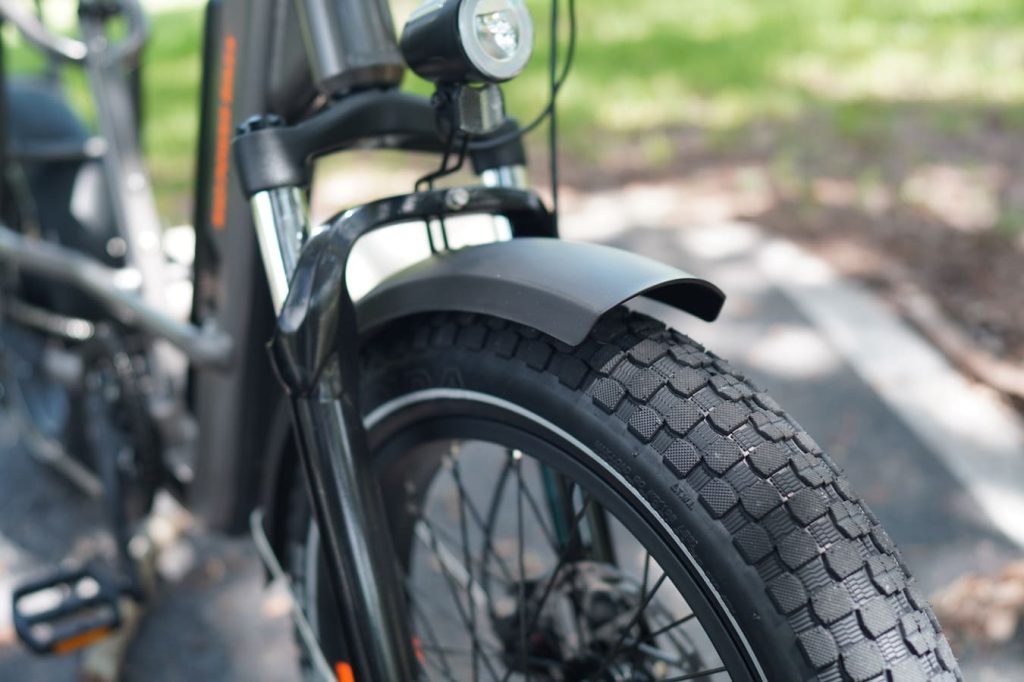
The utility design of the bike is also top-notch. As a step-through, it’s easy to mount, even when loaded up with cargo on the rear rack. There are so many RadRunner copies and clones these days that it can be hard to remember that this is the bike that started it all. And Rad hasn’t lost sight of that, ensuring the most recent edition stays true to that RadRunner DNA that makes it a potent little cargo hauler. It feels like a stubby cargo bike because that’s what it is.
You really begin to appreciate this bike’s potential when you add accessories. Keep in mind Rad’s accessories don’t come cheap, but they add even more utility here.
One of my favorites has always been the Passenger Package since it turns this into a two-passenger e-bike. I can easily treat it like my motorbikes or scooters, taking my wife along for a ride. A two-person e-bike is a handy transportation tool, solving the one-person-per-bike dilemma that has long plagued two-wheelers.
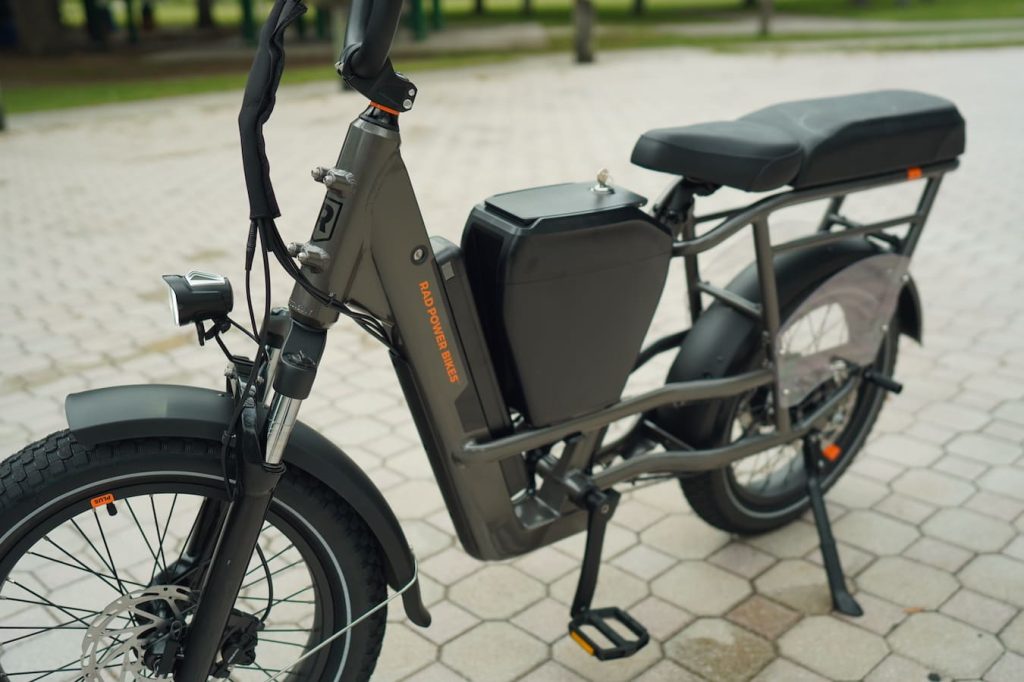
Then there’s the cargo options, and this is where the bike really shines. I was most impressed by the hard cases, which are lockable and sturdy. I’m not kidding – I’ve got an electric motorcycle that has locking hard cases that feel flimsy next to Rad’s bike hard cases. These are solid, waterproof cases with sealing gaskets to keep rain out. They are so well constructed that if you hit something while riding, you’d better check that thing first. These boxes aren’t going anywhere.
The only downside is they all seem to have different keys, and if you go with the two side cases, the rear rack case and the center console, you’ll have four different cargo keys to deal with. I know keying them alike would be tricky since some people will only order a few cases and the whole set, but if there were an option for a quadfecta of keyed-alike boxes, I’d jump for it in a heartbeat.
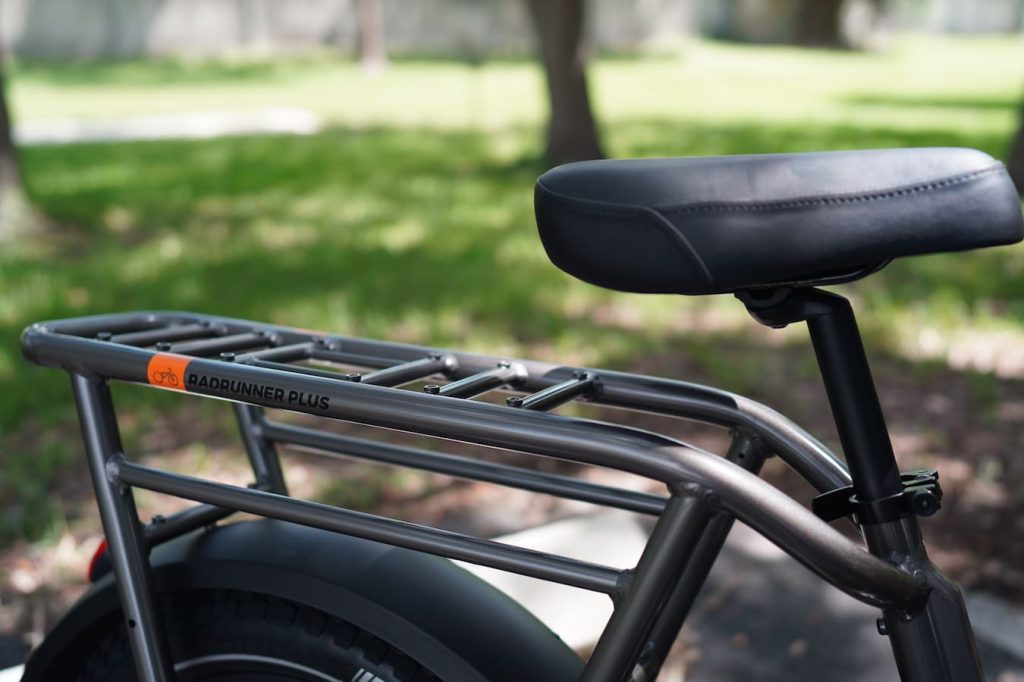
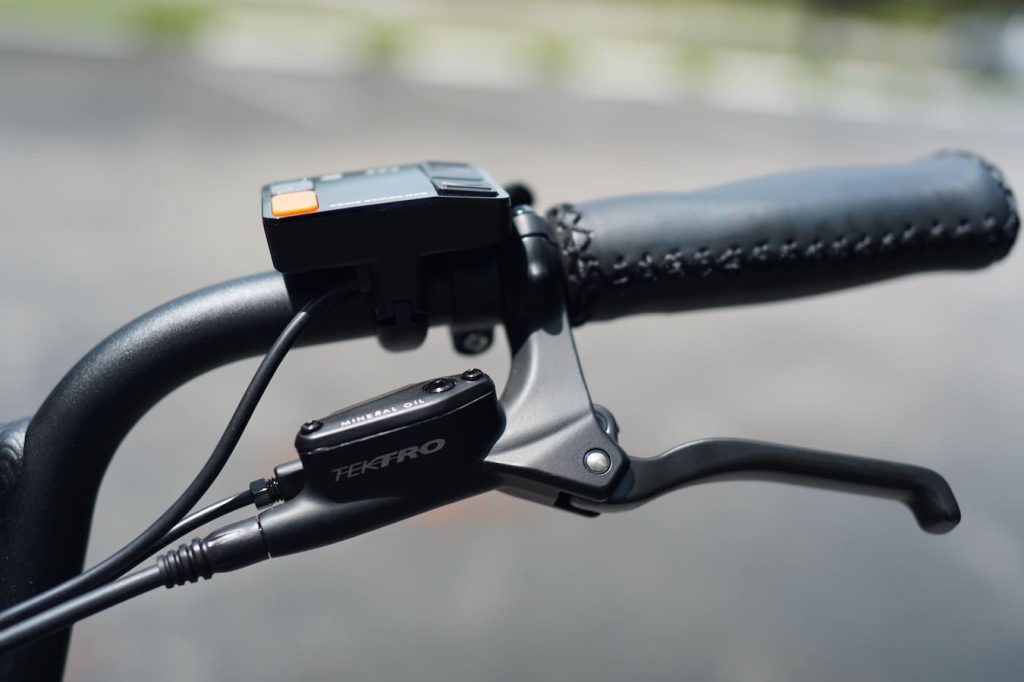
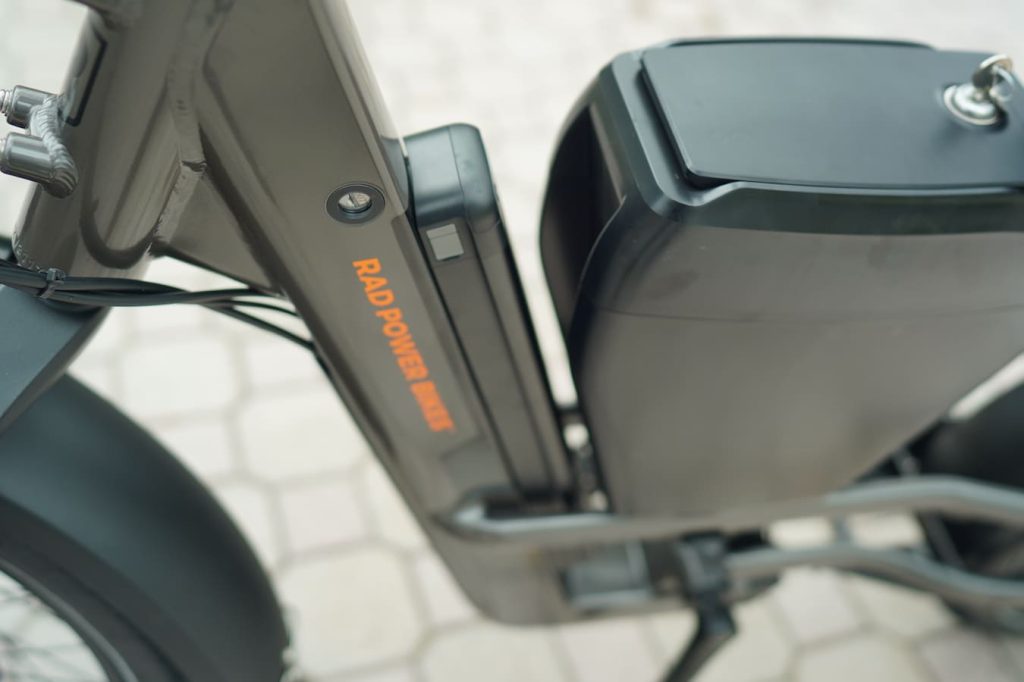
Top comment by papadoudi
Cadence sensor. Would have expected a torque sensor at this price.
As nice as the bike and its accessory line is, not everything is perfect. One thing I wish this version of the RadRunner Plus hadn’t lost was the center kickstand. There’s a new side stand, which works fine, but I liked the center Y-kickstand for its stable parking option, especially when loaded with lots of cargo.
Then there’s the price. At $2,299, this is a tougher sell today than it would have been in the past. It’s a great bike, but many bikes on the market now have good utility designs, hydraulic brakes, 750W motors, big batteries, and nice accessories – and many of them cost significantly less.
They aren’t as nice as the RadRunner 3 Plus, I can attest to that. But saving nearly a grand will be worth cutting a few corners for many people.
So, in my opinion, if you have the extra cash to spend, you’re going to get an amazing quality utility bike with the RadRunner 3 Plus. It’s just hard for me to call it the same bang-for-your-buck as it once was a few years ago, even in the non-Plus version. You can, of course, still get the RadRunner 2, which is the current “non-Plus” version, and it’s only $1,299 at its current sale price. It doesn’t get you many of the nicer parts of the RadRunner 3 Plus, but it’s a hell of a deal. For the RadRunner 3 Plus here, I still say Rad did a great job on it – I just wish it was a few hundred bucks cheaper so I could give it a more forceful recommendation based on value and not just on quality. As it stands, it’s a great bike, but a pricey one.
FTC: We use income earning auto affiliate links. More.




Comments